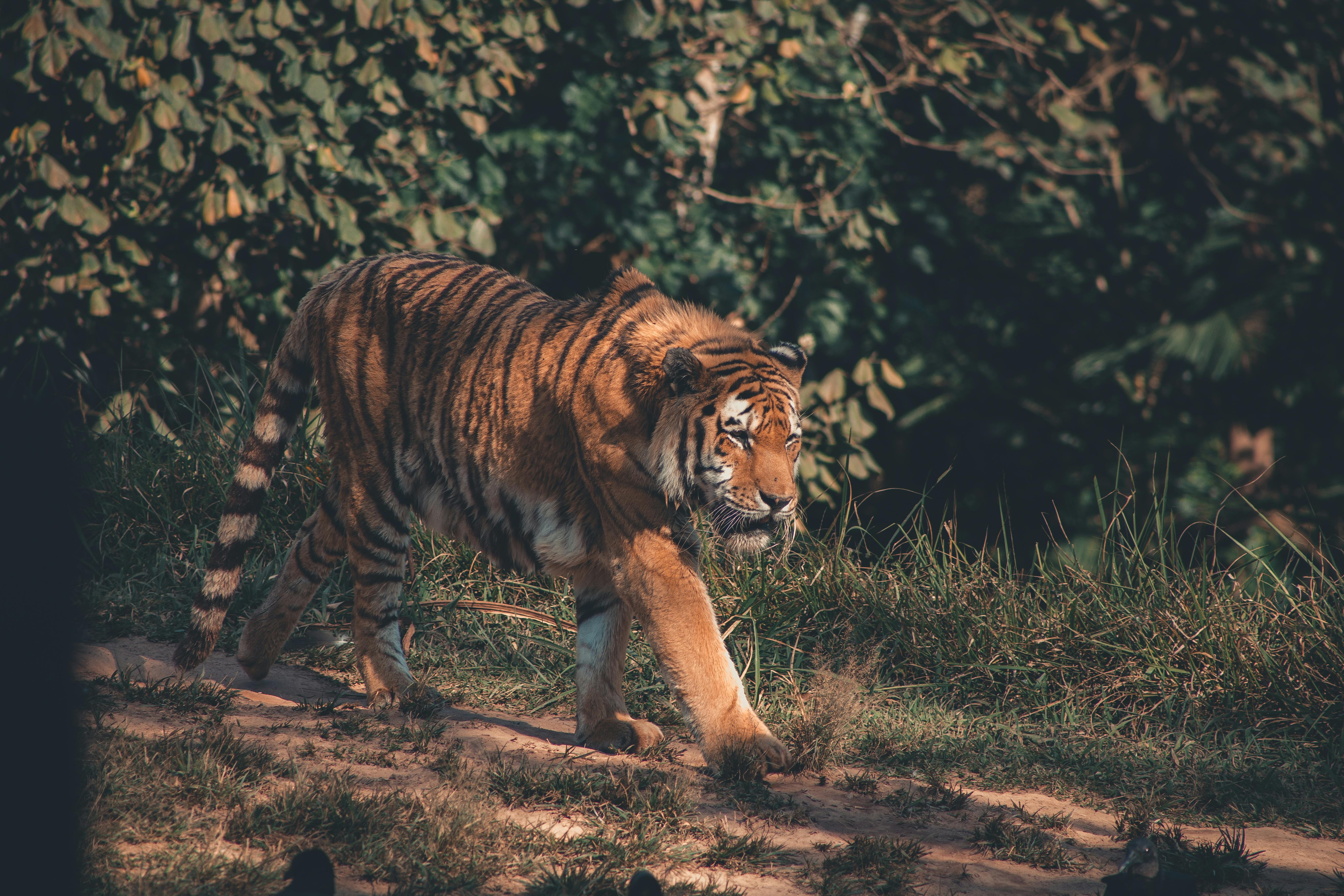Jungle Safaris in India - Encountering Wildlife in their Natural Habitat

Strong 8k brings an ultra-HD IPTV experience to your living room and your pocket.
It's a thrilling experience to venture into the dense jungles of India and witness wildlife in their natural habitat. From majestic tigers to elusive leopards, the country's national parks and wildlife sanctuaries offer an unparalleled opportunity to observe a wide variety of species up close. In this blog post, we will investigate into the world of jungle safaris in India, exploring the best destinations, tips for a successful safari, and the incredible biodiversity that makes this experience truly unforgettable.
Planning Your Safari
Your jungle safari in India is an exciting adventure that requires thorough planning to make the most of your experience. From deciding the best time to visit to choosing the right safari package, careful consideration is imperative to ensure a successful wildlife encounter in their natural habitat.
Best Times to Visit
With India's diverse climate, the best time to go on a jungle safari varies across different regions. In general, the cooler months from October to March offer pleasant weather for wildlife sightings. However, if you're keen on spotting specific animals such as tigers, the dry season from April to June is ideal when vegetation is sparse, making it easier to track wildlife.
Monsoon season from July to September may offer lush green landscapes but also brings heavy rains and dense foliage, making animal sightings more challenging. It's crucial to research the specific wildlife reserves and their peak seasons to maximize your chances of spotting unique fauna.
Choosing the Right Safari Package
Any jungle safari package you choose should align with your interests and expectations. Whether you prefer a luxury lodge with all amenities or a rugged camping experience, there are options to suit every preference and budget. Consider factors such as the duration of the safari, the type of accommodation, and the expertise of guides when selecting a package to ensure a fulfilling and comfortable wildlife experience.
A reputable safari operator can provide valuable insights into the best routes, wildlife behavior, and photography opportunities during your jungle expedition. They can also customize the itinerary according to your preferences, whether you're a wildlife enthusiast, bird watcher, or nature photographer seeking unique moments in the wild.
Top Safari Destinations in India
It is an exhilarating experience to explore the wilderness of India through jungle safaris. The country is home to a rich array of flora and fauna, offering unique opportunities to encounter wildlife in their natural habitat. Here are some top safari destinations in India that promise an unforgettable experience.
Jim Corbett National Park
On the foothills of the Himalayas in Uttarakhand, Jim Corbett National Park is one of the oldest and most prestigious national parks in India. Established in 1936, it is known for its diverse wildlife, including tigers, leopards, elephants, and more. The park offers jeep safaris and elephant safaris, providing visitors with a chance to witness these majestic creatures up close in their natural surroundings.
Visitors to Jim Corbett National Park can also enjoy bird watching, nature walks, and wildlife photography. The park's picturesque landscapes and peaceful ambiance make it a favored destination for nature enthusiasts and wildlife photographers.
Ranthambore National Park
ParkLocated in the state of Rajasthan, Ranthambore National Park is a haven for wildlife lovers. The park is famous for its tiger population and is one of the best places in India to spot these magnificent predators in the wild. In addition to tigers, Ranthambore is home to a variety of other wildlife species, including leopards, sloth bears, and crocodiles.
DestinationsRanthambore National Park offers both jeep safaris and canter safaris for visitors to explore its vast wilderness. The park is set amidst the Aravalli and Vindhya mountain ranges, providing a stunning backdrop for wildlife sightings. With its diverse terrain and rich biodiversity, Ranthambore is a must-visit destination for wildlife enthusiasts.
Kanha Tiger Reserve
TigerLocated in Madhya Pradesh, Kanha Tiger Reserve is one of the top tiger reserves in India. The park is renowned for its significant tiger population and conservation efforts. Apart from tigers, Kanha is also home to leopards, wild dogs, and a variety of bird species, making it a paradise for nature lovers.
AnyVisitors to Kanha Tiger Reserve can initiate on thrilling jeep safaris to explore the dense forests and grasslands, hoping to catch a glimpse of the elusive tigers. The park's tranquil surroundings and diverse wildlife make it a perfect destination for those seeking an immersive jungle experience.
Bandhavgarh National Park
KanhaSituated in Madhya Pradesh, Bandhavgarh National Park is known for its high density of tigers, making it one of the best places in India to spot these majestic felines. The park's hilly terrain, grassy meadows, and dense forests provide a perfect habitat for tigers, leopards, deer, and various bird species.
ToWith its rich biodiversity and fascinating history, Bandhavgarh National Park attracts wildlife enthusiasts and history buffs alike. The park is also home to ancient ruins and temples, adding a touch of mystique to the overall safari experience.
Wildlife You May Encounter
Not only are jungle safaris in India thrilling and exciting, but they also offer the unique opportunity to encounter a diverse array of wildlife in their natural habitat. From majestic tigers to playful elephants, the jungles of India are teeming with fascinating creatures waiting to be discovered.
Iconic Species to Look For
Look out for the iconic Bengal tiger, India's national animal, as you venture through the dense jungles. Keep your eyes peeled for the elusive leopard, the graceful Indian elephant, and the regal Asiatic lion. These iconic species are a sight to behold and a testament to India's rich biodiversity.
Embark on your safari with a sense of anticipation, as you never know what magnificent creatures you may encounter along the way. Each sighting is a reminder of the importance of preserving these species and their natural habitats for future generations to appreciate.
Conservation Efforts and Wildlife Protection
Conservation efforts in India are crucial in protecting the country's diverse wildlife. National parks and wildlife sanctuaries play a significant role in safeguarding endangered species and their habitats from threats such as poaching and deforestation.
Conservationists work tirelessly to monitor and conserve wildlife populations, implement anti-poaching measures, and raise awareness about the importance of preserving India's precious biodiversity. Through these efforts, many species have been saved from the brink of extinction, offering hope for the future of India's wildlife.
Wildlife conservation is an ongoing battle that requires commitment from governments, organizations, and individuals alike. By supporting conservation efforts and sustainable practices, we can ensure that future generations will also have the privilege of encountering India's magnificent wildlife in their natural surroundings.
Tips for a Safe and Responsible Safari
All jungle safaris come with an inherent thrill of encountering wild animals in their natural habitat. However, it is imperative to remember that we are visitors in their home, and it is our responsibility to ensure a safe and respectful experience for both the animals and ourselves. Here are some tips to keep in mind for a safe and responsible safari:
Do's and Don’ts in the Jungle
Tips for a safe jungle safari include staying inside the designated vehicles at all times, as it protects both humans and animals. It's imperative to maintain silence to observe wildlife without causing disturbance. Avoid feeding the animals, as it disrupts their natural diet and behavior. Do respect the natural habitat by not littering or vandalizing the surroundings. Additionally, always follow the instructions of the guide and adhere to park rules for a safe and enjoyable experience in the jungle.
Any sudden movements or noises could startle the animals and lead to potentially dangerous situations. Remember that we are guests in their territory, and it is crucial to observe from a distance without causing any harm or disruption to their routine.
Engaging with Local Communities
Responsible engagement with local communities during a safari can enhance the overall experience and contribute positively to the socio-economic development of the region. For instance, interacting with local guides and villagers can offer valuable insights into the area's culture, traditions, and ecosystem. Building respectful relationships with the communities can also help in creating a sustainable environment for both wildlife conservation and local livelihoods.
Summing up
Upon reflecting on the exhilarating experiences of jungle safaris in India, it is evident that encountering wildlife in their natural habitat offers a unique and memorable way to connect with the natural world. From the royal Bengal tigers of Ranthambore to the majestic elephants of Bandipur, these safaris provide an opportunity to witness the beauty and diversity of Indian wildlife up close. With proper planning and respect for the environment, these safaris can be a truly remarkable adventure for nature enthusiasts and wildlife lovers alike.
Note: IndiBlogHub features both user-submitted and editorial content. We do not verify third-party contributions. Read our Disclaimer and Privacy Policyfor details.







